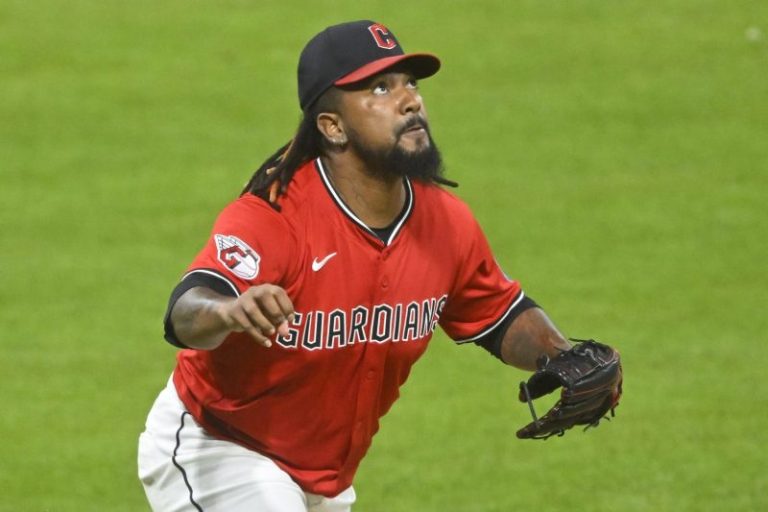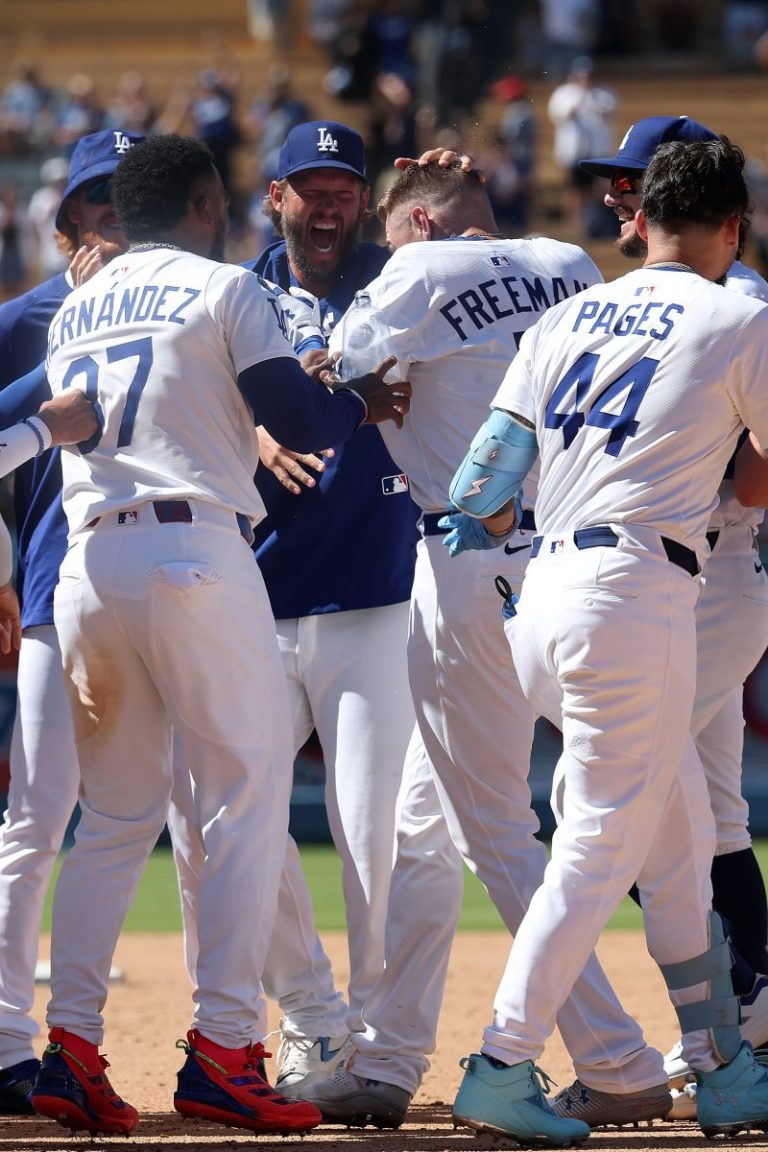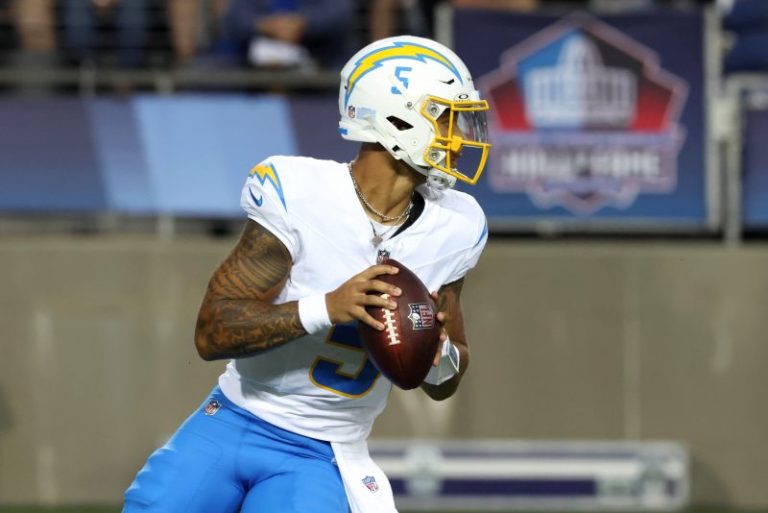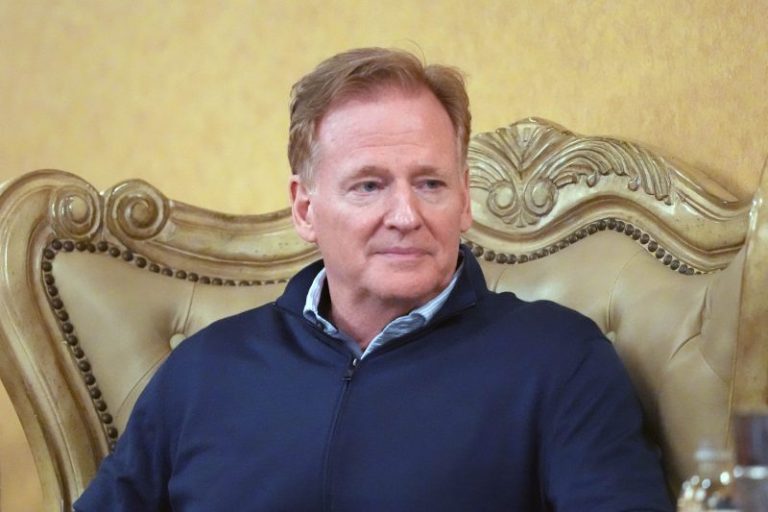The NFL returned tonight.
The Los Angeles Chargers kicked off the NFL’s Hall of Fame induction weekend with a resounding preseason win over the Detroit Lions.
The Chargers put together an all-around dominant performance in their 34-7 win over the Lions. Their defense and special teams forced five turnovers, leading to 17 points, while Trey Lance put together a strong showing as he battles for the backup quarterback job behind Justin Herbert.
Lance played the first three quarters of the game and flashed throughout the night. The No. 3 overall pick in the 2021 NFL Draft showed off his strong arm with numerous downfield passes, including a dotted downfield 28-yard dart to KeAndre Lambert-Smith. The fifth-year pro also showed off improved accuracy and ball placement, completing 13 of 20 passes for 120 yards and two touchdowns on the evening.
Lance wasn’t the only young player to perform well. Undrafted cornerback Nikko Reed had an interception early in the game that earned him praise from Jim Harbaugh. Lambert-Smith also had a couple of nice catches, including a 15-yard touchdown during which he showed off his separation skills and shook loose from the Lions defender for the score.
Detroit’s five turnovers put a damper on its performance, but Dan Campbell’s squad had to be encouraged by the performance it got from rookie receivers Isaac TeSlaa and Dominic Lovett. The duo combined for seven catches and 77 yards despite up-and-down performances from quarterbacks Kyle Allen (9 for 14, 91 yards and two interceptions) and Hendon Hooker (3 of 6, 18 yards and one interception).
USA TODAY Sports provided live updates, highlights and more from the Hall of Fame Game matchup between the Chargers and Lions below. All times are Eastern.
Myles Purchase logs interception, fifth Chargers takeaway
The Chargers continue to force the Lions into turnovers. This time, it’s undrafted rookie Myles Purchase making the play. He managed to grab a pass intended for Dominic Lovett and returned it 49 yards.
Los Angeles will now kneel out a 34-7 win.
Kimani Vidal punches in 3-yard touchdown on fourth-and-goal
The Chargers decided to go for it on fourth and goal late in the fourth quarter of the Hall of Fame Game. Vidal took a carry off tackle to the right side and he managed to find enough of a crease to power his way into the end zone.
Cameron Dicker makes the extra point, and the Chargers lead 34-7 with 3:42 left in regulation.
Chargers 34, Lions 7
DJ Uiagalelei checks into game for Chargers
Trey Lance’s day is done after he completed 13 of 20 passes for 120 yards and two touchdowns. Finishing the game for Los Angeles will be Uiagalelei, an undrafted rookie who played collegiately at Clemson, Oregon State and Florida State.
Uiagalelei completed 1 of 2 passes for 12 yards on his first series of the game. The Chargers punted the ball back to the Lions after going 3-and-out.
Score update: Chargers leading Lions 27-7 entering fourth quarter
The Chargers have the Hall of Fame Game under control and will take a 20-point lead into the fourth quarter.
Trey Lance has played the entire game thus far and performed well, completing 12 of 20 passes for 120 yards and two touchdowns, resulting in a 114.6 passer rating. His performance could allow him to gain ground against Taylor Heinicke in the Chargers’ backup quarterback battle.
As for the Lions, they haven’t been able to consistently move the ball, as they were outgained 207-174 in the first three quarters. They have also turned the ball over four times without forcing a takeaway, which is the primary reason they find themselves down by so much.
Los Angeles and Detroit will likely get some of their back-end roster candidates more playing time in the fourth quarter.
Chargers extend lead with another Cameron Dicker field goal
Los Angeles continues to move the ball consistently on offense, but they stalled out in a goal-to-go scenario for the second consecutive drive. The Chargers nearly capped the drive with a 9-yard touchdown pass to Dalevon Campbell, but he wasn’t able to keep his feet in bounds while catching a pass from Lance on the sideline.
Instead, the Chargers called upon Dicker to make a field goal. He was true from 27 yards to make it 27-7.
Chargers 27, Lions 7
Cameron Dicker makes 23-yard field goal
The Chargers couldn’t take full advantage of the Lions fumble, failing to gain a yard after the takeaway. Dicker was still able to get Los Angeles on the board, as he made the 23-yard field goal with ease to put the Chargers up three scores, 24-7.
Chargers 24, Lions 7
Lions fumble punt for fourth turnover of game
The Lions were about to get the ball back, trailing 21-7 in the second half, when Jakobie Keeney-James failed to reel in a towering J.K. Scott punt. The Chargers managed to jump on the ball, notching their fourth takeaway of the game and positioning Trey Lance with another goal-to-go opportunity.
Trey Lance stats today
Lance posted a strong first half in the Hall of Fame Game, showing off his strong arm and improved accuracy as he enters his fifth NFL season. He completed 9 of 12 passes for 97 yards and two touchdowns, good for a 137.8 passer rating.
Halftime score: Chargers lead Lions 21-7 in Hall of Fame Game
The Lions got on the board in the second quarter, but the Chargers kept them at an arm’s length. Los Angeles’ defense has performed well, generating three turnovers, while the offense saw Trey Lance post a 137.8 passer rating in the first half.
Rookie KeAndre Lambert-Smith has also flashed for Los Angeles, recording two catches for 43 yards and a touchdown and logging a game-long 28-yard reception.
The Lions have also had a pair of rookie receivers perform well. Isaac TeSlaa and Dominic Lovett have combined for six catches and 70 yards despite Kyle Allen’s up-and-down performance. Allen completed 9 of 14 passes for 91 yards but tossed two interceptions.
Detroit will need better quarterback play in the second half to make a game of this exhibition contest.
Trey Lance hits KeAndre Lambert-Smith for 15-yard touchdown
Lance’s strong first half continues. Just after the two-minute warning, he found Lambert-Smith, a fifth-round rookie out of Auburn, open. Lambert-Smith managed to get an angle on the Detroit defender and was easily able to get into the end-zone.
Dicker once again made the extra point to put the Chargers up 21-7 with 1:51 left in the first half
Chargers 21, Lions 7
Lions get on board with 3-yard Craig Reynolds TD run
The Lions capped off a 15-play, 60-yard drive by allowing Reynolds to punch in a 3-yard touchdown on second-and-goal. Jake Bates knocked in the extra point to cut Detroit’s deficit to 14-7.
Detroit’s drive lasted 9:29 and took up most of the second quarter. The Lions converted two fourth downs on the drive thanks to a Kyle Allen scramble and a Dominic Lovett catch on fourth-and-1 in the red-zone. Dan Campbell is remaining aggressive, even in the preseason.
Chargers 14, Lions 7
Score update: Chargers lead 14-0 after first quarter
Los Angeles got off to a good start to the Hall of Fame Game. The Chargers’ defense has forced three turnovers, two of which set them up for short-field touchdowns, while quarterback Trey Lance has also looked good, completing 6 of 8 passes for 59 yards and a touchdown.
Meanwhile, Kyle Allen has been much shakier for the Lions, completing just 4 of 8 passes for 66 yards and two turnovers. If not for a Cameron Dicker field goal miss, Detroit’s deficit could be worse.
Kyle Allen throws second interception
Allen tried to take a downfield shot to third-round rookie Isaac TeSlaa after enjoying a solid start to Detroit’s second offensive drive. However, the veteran quarterback overthrew TeSlaa, which allowed safety Tony Jefferson to track down the ball in the end-zone and make a diving interception.
The Chargers will get the ball back on their 20-yard line.
Who is Nikko Reed?
Reed is an undrafted rookie who played four seasons of college football at Oregon. The 5-10, 160-pound cornerback notched five interceptions across four seasons (49 games) and logged seven pass defenses in each of his final three seasons with the Ducks.
Reed has impressed thus far at Chargers camp and logged an interception in the first quarter of the Hall of Fame Game.
Kimani Vidal punches in 2-yard TD run
Once again, the Chargers scored off a Lions turnover. Two plays after Nikko Reed’s interception, Vidal got the ball and ran into the end zone for the score.
Cameron Dicker’s extra point was good, giving the Chargers an early 14-0 lead over the Lions.
Chargers 14, Lions 0
Nikko Reed intercepts Kyle Allen, sets up goal-to-go opportunity for Chargers
Reed went undrafted in 2025 and wasn’t invited to the NFL Combine, but he is making a name for himself early in the NFL preseason. He undercut a pass intended for Tom Kennedy and returned it 60 yards to put Los Angeles at the 6-yard line.
Cameron Dicker hits upright with 53-yard field goal attempt
Dicker went 9 for 11 on attempts from 50-plus yards during the 2024 season. His first such attempt of the preseason didn’t go as well, as it doinked off the left upright and didn’t go through.
The Chargers maintain a 7-0 lead despite Dicker’s miss, though Detroit will get the ball near midfield as the Lions look to score for the first time.
Trey Lance hits Will Dissly for 5-yard TD
The first touchdown of the 2025 NFL preseason belongs to the Chargers. Lance, the former No. 3 overall pick by the 49ers, feathered a fourth-and-2 pass to Dissly, a veteran tight end, to get Los Angeles on the board.
Cameron Dicker converted the extra point to give the Chargers an early 7-0 lead in Canton.
Chargers 7, Lions 0
Lions fumble opening kickoff
The 2025 NFL preseason starts with a turnover. Lions return man Grant Stuard had the ball pop out of his hands after he hit into the back of his teammate, Anthony Pittman.
The Chargers scooped up the loose ball to set themselves up in scoring range for the first offensive drive of the NFL season.
Hall of Fame Game start time
- Date: Thursday, July 31, 2025
- Time: 8:00 p.m. ET
The Lions vs. Chargers game will kick off the 2025 NFL preseason at 8:00 p.m. ET.
Hall of Fame Game TV Channel
How to live stream Hall of Fame Game?
- Streaming: Peacock | Fubo
Watch the ‘Hall of Fame Game’ on Peacock
Hall of Fame Game odds, Lions vs. Chargers moneyline, over/under
The Lions are favorites to defeat the Chargers, according to the BetMGM NFL odds. Looking to wager? Check out the best mobile sports betting apps offering NFL betting promos in 2025 including the ESPN BET app and Fanatics Sportsbook promo code.
- Spread: Lions (-1.5)
- Moneyline: Lions (-118); Chargers (+100)
- Over/under: 32.5
Not interested in this game? Our guide to NFL betting odds, picks and spreads has you covered.
New to sports betting? USA TODAY readers can claim exclusive promos and bonus codes with the best online sportsbooks and sports betting sites.
4th & Monday: Our NFL newsletter always brings the blitz
Do you like football? Then you’ll enjoy receiving our NFL newsletter delivered to your inbox.
Get the latest news, expert analysis, game insights and the must-see moments from the NFL conveniently delivered to your email inbox. Sign up now!
Where is the Hall of Fame Game played?
The Hall of Fame Game is played at Tom Benson Hall of Fame Stadium in Canton, Ohio. It is a significant part of Hall of Fame Village that seats over 20,000 people. It serves as the home field for Canton City Schools’ McKinley High School Bulldogs. It has been a host site for numerous championship events, including the inaugural USFL Championship Game, the 2021 NCAA DIII Stagg Bowl, and over two decades of OHSAA high school football championship games.
Hall of Fame Game weather update
It’s going to be a cloudy night in Canton with a high of 66 degrees at kickoff and a low of 61 degrees at midnight. According to the AccuWeather forecast, wind gusts will max out at 30 mph while the chances of precipitation are below 10% for the entire game.
When is the Pro Football Hall of Fame enshrinement ceremony?
The Enshrinement starts at 1 p.m. on Saturday, August 2, at Tom Benson Hall of Fame Stadium. Chris Berman from ESPN will host the event, which will celebrate the Class of 2025.
Who are the 2025 Hall of Fame inductees?
Two days after tonight’s game, former Chargers tight end Antonio Gates will be enshrined into the Pro Football Hall of Fame’s class of 2025. Eric Allen, Jared Allen and Sterling Sharpe are joining him as part of this year’s class.
When does the NFL regular season start?
- Week 1: Thursday, Sept. 4 – Monday, Sept. 8
The NFL regular season begins when the Dallas Cowboys and Philadelphia Eagles kick off in Philadelphia on Thursday, Sept. 4.
Week 1 continues with the Kansas City Chiefs and Los Angeles Chargers clashing in Sao Paulo, Brazil on Friday, Sept. 5. The remainder of the opening week’s slate continues Sunday and concludes Monday.
Who are the Hall of Fame Game announcers for NBC?
Mike Tirico will handle play-by-play duties during the game, with Cris Collinsworth providing color commentary. Melissa Stark will be reporting from the sidelines and and Terry McAulay will be the rules analyst on hand.
Hall of Fame Game history for Lions and Chargers
This will be the Lions’ fourth trip to Canton and the Chargers’ third. Neither team has played in the Hall of Fame Game since 1994. The Chargers (0-1-1) were part of the only scoreless game in the event’s history. They tied with the Green Bay Packers in 1980, but the game was halted in the fourth quarter due to a severe storm. The Lions (1-2) last played in the Hall of Fame Game in 1991, where they defeated the Broncos 14-3.
This post appeared first on USA TODAY










